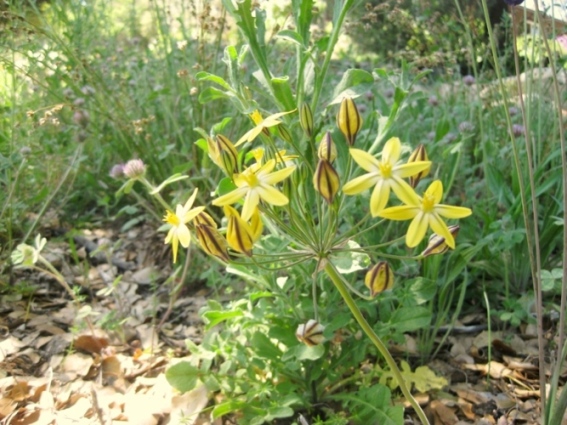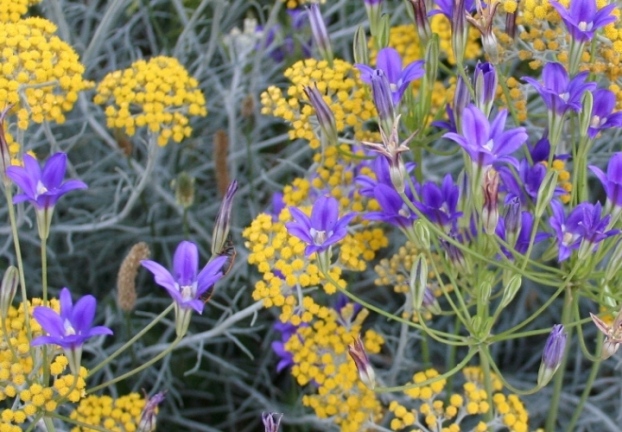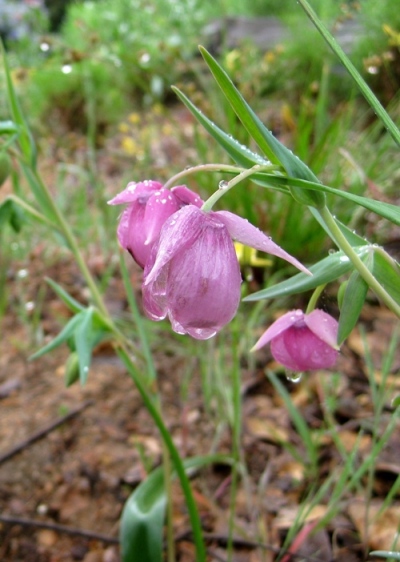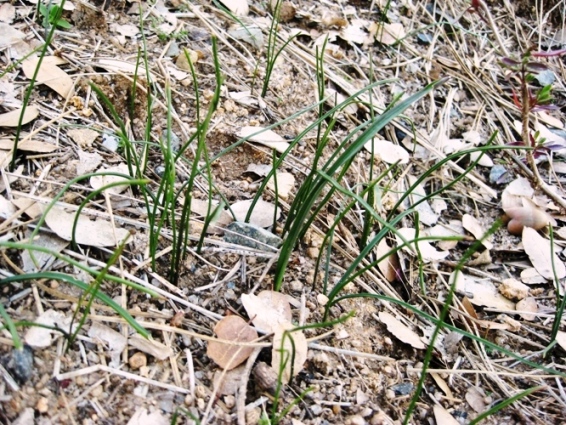My idea of gardening is to discover something wild in my wood and weed around it with the utmost care until it has a chance to grow and spread.
– Margaret Bourke-White
Covered with the greenest and freshest grass, the open woodland is where the earliest wildflowers of Spring spread their wealth of ephemeral loveliness. The leaves of California native ephemerals are already appearing in mid-February in the Sierra foothills, like expected friends, rarely seen.
Good morning, sunshine
‘Spring ephemeral’ describes a life cycle of perennial woodland wildflowers which develop stems, leaves, and flowers early each Spring and then quickly bloom, go to seed and die back to roots, or bulbs for the rest of the year. This scheme is very common in deciduous forests as it allows small plants to take advantage of the high amount of sunlight reaching the forest floor prior to the leafing out of taller plants.
In A Natural History of California, Allan A. Schoenherr says,
“During a single growing season, ephemeral or annual plants germinate from seeds and complete their growth and flowering in time to set seed, which is also a strategy of desert plants. Accomplishing an entire life cycle in less than one year requires abundant sunlight.”
You will find these short-lived beauties in open ground and under deciduous trees and shrubs. They survive by taking advantage of the Spring sunshine, blooming, and ultimately completing their month, or two month, appearance before the woodland trees cast shade and while water is still available.
Late Winter signs of Spring
Developing in late winter, the thin round stems of Pretty Face, Triteleia ixioides, and Brodiaea, Brodiaea elegans, are 5 inches tall already, getting covered with snow after snow in the Winter chill. These precious perennials bloom, hovering eight inches above the ground with an airy layer of deep blue and soft yellow.
Triggered by the warming soil, they rapidly send up foliage, blossom, set seed, and usually disappear in six to eight weeks — all before summer starts. These two naturalize easily if the bulbs are undisturbed and not choked with weeds. Allowing the natural leaf litter to remain will discourage weeds.
Two favorites hide themselves, waiting to be discovered. Rose globe lilies with their pendulous pink blooms and Shooting stars with swept-back, seemingly wind-blown flowers pointed with dark tips, are rare and therefore treasured. Neighbors compete, pridefully pointing out the earliest Shooting stars in their gardens.
Other ephemerals in the Sierra foothill garden:
Blue Dicks, Dichelostemma capitatum
California Golden Violet, Viola pedunculata
Elegant Brodiaea, Brodiaea elegans
Hooker’s Evening Primrose, Oenothera elata hookeri
Mariposa or Butterfly Lily, Calochortus venustus
Miner’s lettuce, Claytonia parviflora
Miniature lupine, Lupinus bicolor
Owl’s Clover or Valley Tassels, Castilleja lineariloba
Pretty Face, Triteleia ixioides
Rose Globe or Fairy Lily, Calochortus amoenus
Shooting Star, Dodecatheon jeffreyi
Here, then gone
The word, ephemeral, derives from the Greek ephemerios, ‘lasting one day’. In many cases, in late Spring or early summer, it’s as if the plants have disappeared because no top growth is visible. The roots and tiny bulbs, however, are storing up sugars for a performance next year. To keep track of where spring ephemerals are growing in your garden, combine them with low growing companion plants, which act as markers and then provide a transition to summer.
Some companion marker plants:
Blue-eyed grass, Sisyrinchium bellum
Helichrysum petiolare ‘Moe’s Silver’
Helichrysum thianschanicum ‘Icicles’
Golden Oregano, Origanum vulgare auream ‘Gold’
Pacific stonecrop, Sedum spathulifolium
Sweet Violet, Viola odorata
Western Columbine, Aquilegia formosa
Wood Fern, Dryopteris arguta
This sudden flash of ephemeral beauty is but a promise of Spring to come. Each day will bring more blooms and new discoveries.
For more on existing California native ephemerals growing in my garden, and more photos, see Ephemerals and Wildflowers.








7 comments